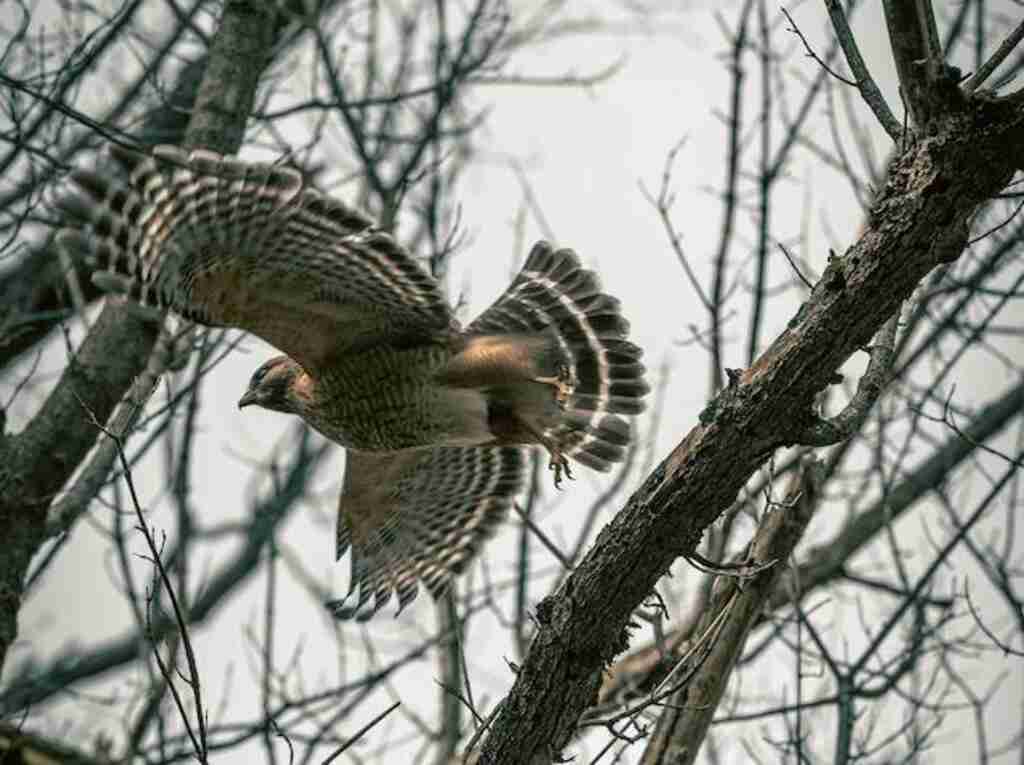Do Hawks Eat Sparrows? The ultimate bird feud! Hawks, the fierce predators with a knack for aerial theatrics, and sparrows, the tiny daredevils of the avian world, are locked in an intriguing predator-prey dance.
Join us on a thrilling journey as we unravel their complex relationship, uncover what hawks devour, why sparrows may catch their eye, and the surprising impact on both species’ populations.
Get ready to witness a battle of wits and survival tactics like never before!
Table of Contents
- 0.1 Overview of Hawk’s Hunting Behavior
- 0.2 Description of Sparrow’s Characteristics that make them Vulnerable to Hawks
- 0.3 Examples of Hawk Species that Prey on Sparrows
- 1 What Do Hawks Eat?
- 2 Do All Hawks Eat Sparrows?
- 3 The Impact on Sparrow Populations
- 4 Conclusion
- 5 FAQs: Do Hawks Eat Sparrows?
- 5.1 Are sparrows a common food source for hawks?
- 5.2 Do all species of hawks eat sparrows?
- 5.3 Why do hawks target sparrows specifically?
- 5.4 What other types of prey do hawks eat besides sparrows?
- 5.5 How do hawks hunt and capture sparrows?
- 5.6 Do hawks scavenge or only hunt live prey?
- 5.7 Do hawks play a role in sparrow population dynamics?
- 5.8 What is the impact of hawk predation on ecosystems?
- 5.9 How can sparrows protect themselves from hawk predation?
- 5.10 What can be done to protect sparrows from hawk predation?
- 6 Author
Overview of Hawk’s Hunting Behavior
Hawks are birds of prey that exhibit an impressive hunting behavior. They use their keen eyesight to spot their prey from a distance, and then swoop down from above to attack.
Hawks are known for their speed, agility, and precision when it comes to capturing their prey. Hawks typically hunt during daylight hours, when they can more easily spot their targets.
They use a variety of hunting techniques depending on the species of hawk and the type of prey they are after.
Some hawks soar high in the sky looking for prey, while others hunt actively by rapidly flapping their wings in bursts.
Description of Sparrow’s Characteristics that make them Vulnerable to Hawks
Sparrows are small, social birds that are found in many parts of the world. Despite being common and widespread, sparrows have evolved certain characteristics that make them vulnerable to predators like hawks.
One major characteristic is their small size, which makes them easy targets for larger birds like hawks.
Additionally, sparrows often form large flocks, which can make them more visible to predators like hawks, who can quickly identify where large numbers of potential prey are gathered.
Sparrows prefer habitats such as shrubs or low bushes, which provide cover from predators.
However, this same habitat preference also puts sparrows at risk, as these areas can be prime hunting grounds for hawks.
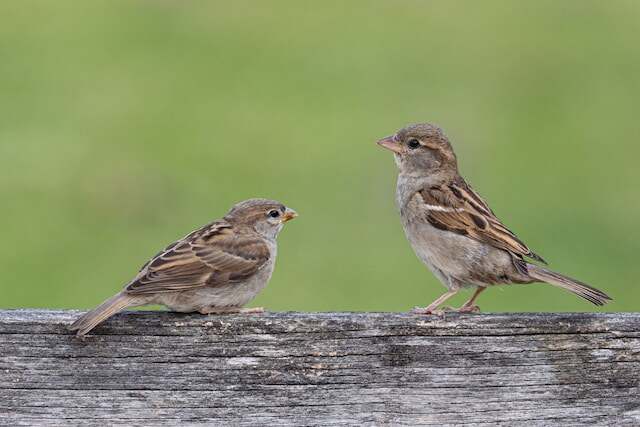
Examples of Hawk Species that Prey on Sparrows
There are several species of hawks that feed on sparrows, including the Cooper’s hawk (Accipiter cooperii) and Sharp-shinned hawk (Accipiter striatus).
These two species specialize in preying on small birds such as sparrows. The Cooper’s hawk is known for its agile flight style, which allows it to navigate through dense vegetation in pursuit of its prey.
It is a stealthy predator that can approach its target with incredible speed and agility. The Sharp-shinned hawk, on the other hand, is known for its small size and quick movements.
It has a preference for hunting in areas where there are large numbers of sparrows, making it an effective predator.
The predator-prey relationship between hawks and sparrows is an interesting interplay between two species that are both fascinating to observe.
Hawks have developed impressive hunting behaviors while sparrows have evolved specific characteristics to help them evade predators like hawks.
Despite this, some species of hawks such as Cooper’s hawk and Sharp-shinned hawk have adapted specifically to hunt sparrows as their primary food source.
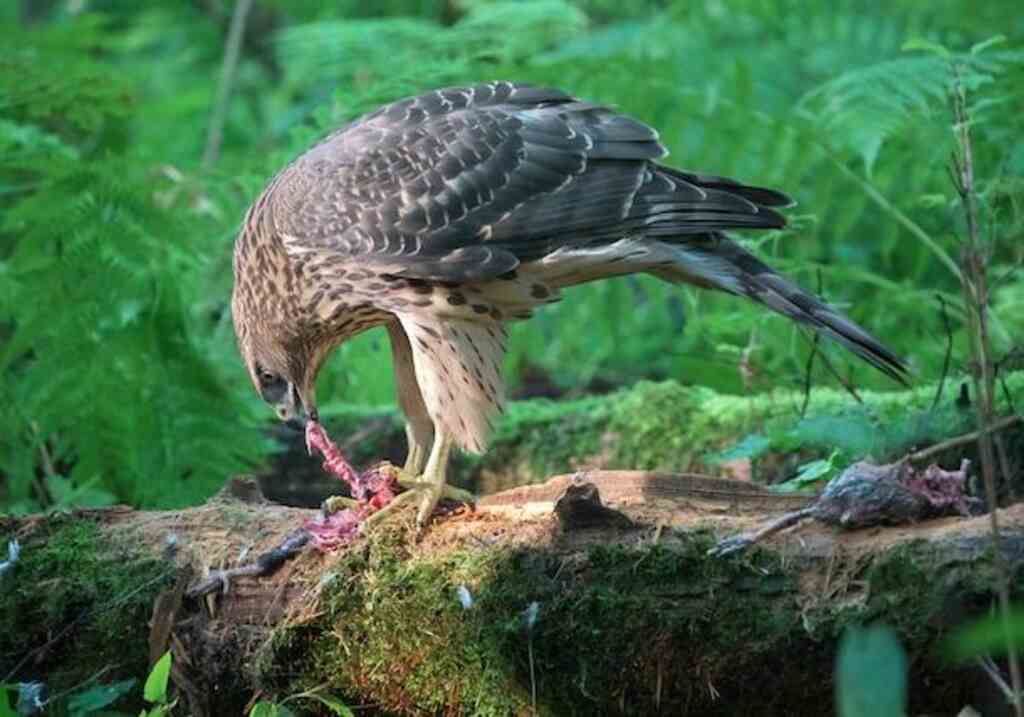
What Do Hawks Eat?
Hawks are birds of prey that are known for their sharp talons, hooked beaks, and exceptional hunting skills.
They typically hunt during the daytime and consume a variety of prey, including small mammals, reptiles, insects, and other birds.
While some hawks have specific dietary preferences based on their location or species type, most will eat whatever is readily available to them.
An Overview of Hawk’s Diet
Hawks are known to eat a wide range of animals ranging in size from small insects to larger mammals such as rabbits and squirrels.
They typically feed on live prey, which they capture using their sharp talons and kill by crushing with their powerful beak. Hawks are also opportunistic hunters that will scavenge if they come across an easy meal.
When it comes to food preferences among different species of hawks, certain types tend to prefer certain prey to others.
For example, some hawks such as the Cooper’s hawk have a preference for medium-sized birds like doves and pigeons, while others like the Red-tailed hawk might prefer smaller rodents like mice and voles.
Explanation of How Hawks Hunt and Capture Prey
Hunting strategies can vary between different species of hawks, but most rely on stealth and surprise when capturing their prey.
They will often perch in high locations such as trees or poles where they can get a good view of the surrounding area before swooping down in an instant to capture unsuspecting prey.
Once captured, hawks use their strong feet equipped with sharp talons to hold onto the struggling animal, while using their hooked beak to deliver a fatal blow to its neck or skull.
After killing its prey, the hawk will use its powerful beak again to tear apart flesh, making it easier for consumption.
Examples of Other Animals That Hawks Eat
Aside from the common prey of small mammals and birds, hawks have also been known to eat reptiles such as snakes and lizards.
They are also opportunistic hunters who will occasionally feed on insects like grasshoppers and beetles. Another interesting aspect of hawk’s diet is their consumption of carrion or dead animals.
While not necessarily a preferred food choice, hawks will consume carrion if they come across it while scavenging. Hawks are versatile predators that hunt with precision and skill.
Their diet mainly consists of live prey, but they are also opportunistic hunters that will eat whatever is available to them. This includes small mammals, birds, reptiles, insects, and even carrion.
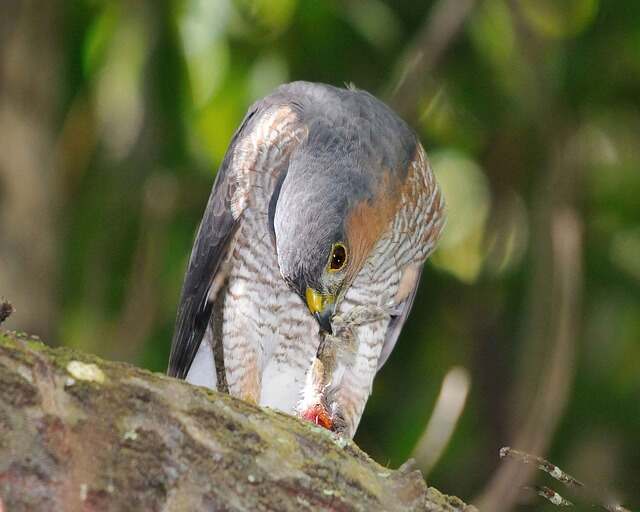
Do All Hawks Eat Sparrows?
The Diversity of the Hawk Family
Not all hawks are created equal – in fact, there are over 270 species of hawks worldwide, each with their own unique characteristics and hunting habits. Some are small and agile, while others are large and powerful.
Some prefer to hunt in open fields, while others stick to densely forested areas. As a result, not every species of hawk feeds on sparrows.
Do Hawks Eat Sparrows?
Yes, hawks do eat sparrows. Hawks are skilled predators known for their ability to swoop down and catch prey. While not all hawk species eat sparrows, many, such as Cooper’s hawks and Sharp-shinned hawks, specialize in preying on small birds like sparrows. This predator-prey relationship is an important aspect of their ecological dynamics.
Hawk Species That Prey on Sparrows
While not all hawks eat sparrows, many species do include them as part of their diet. Sharp-shinned hawks and Cooper’s hawks, for example, are both known to frequently prey on small songbirds such as sparrows.
Additionally, merlins and American kestrels – two smaller species of falcon that are sometimes classified as hawks – also feed on small birds like these.
It’s worth noting that even among these species that do eat sparrows, there can be variations in behavior depending on factors such as geographic location and the abundance of other prey items.
For example, while sharp-shinned hawks may be common predators in some areas where they coexist with large populations of songbirds like sparrows, in other locations they may switch to eating more rodents or insects if those types of prey are more readily available.
Why Don’t All Hawks Eat Sparrows?
So why is it that some hawk species seem to have a taste for sparrows while others do not? There are several possible explanations for this variation in behavior.
For one thing, different hawk species have evolved to fill different ecological niches based on factors such as body size, habitat preference and hunting style.
A larger hawk might be better equipped to take down a larger bird or mammal than a smaller one is – and vice versa.
Additionally, hawks that live in certain types of environments may have adapted to hunt specific types of prey.
For example, a hawk that spends most of its time in a dense forest might be better suited to hunting small mammals like mice than birds like sparrows.
Another factor that could play a role is competition from other predators.
If there are already plenty of other species of animals hunting sparrows or other small birds in a given area, hawks might not bother going after them as frequently – particularly if there are other prey items nearby that are easier to catch or more abundant.
The Intersection Between Ecology and Evolution
Overall, the question whether all hawks eat sparrows is a complex one with no definitive answer.
It depends on factors such as what species of hawk you’re talking about, where they live and hunt, and what other predators they’re competing with for food.
Ultimately, however, the diversity of behaviors within the hawk family serves as a reminder that ecology and evolution are endlessly fascinating subjects – full of surprises and unexpected intricacies at every turn.
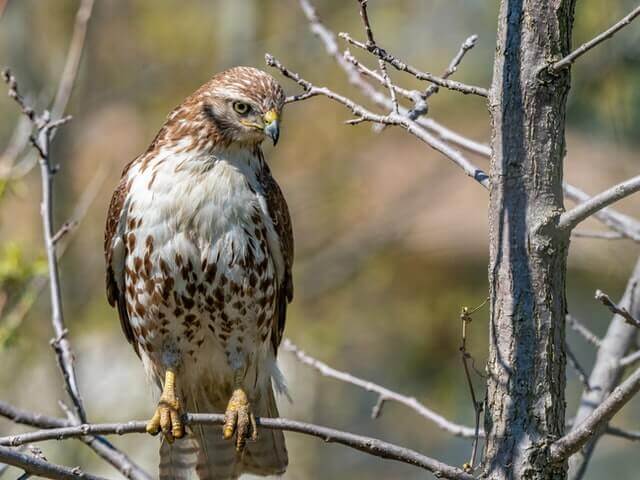
The Impact on Sparrow Populations
Sparrows are small birds that often fall prey to hawks due to their size and vulnerability. The predator-prey relationship between hawks and sparrows can have a significant impact on sparrow populations.
Hawks can be voracious predators, capable of reducing sparrow populations quickly if left unchecked.
This can lead to a decline in biodiversity, as sparrows play an important role in the ecosystem as seed dispersers and insect eaters.
The impact of hawk predation on sparrow populations is not always negative, however.
In some cases, it can lead to stronger, more resilient sparrow populations as surviving individuals develop adaptations that make them less vulnerable to predation.
For example, fledgling sparrows may learn to fly earlier or hide more effectively from predators after witnessing the death of siblings or parents.
Explanation on how the predator-prey relationship can impact sparrow populations
The predator-prey relationship between hawks and sparrows is dynamic and constantly evolving. Hawks are highly adaptable predators that use a variety of hunting techniques to capture prey.
Sparrows, in turn, have developed numerous strategies to avoid being caught by hawks, including evasive flight patterns, hiding in vegetation or seeking safety in numbers.
However, even with these defenses in place, hawk predation remains a major factor influencing sparrow population dynamics.
In areas where hawk populations are high or habitat has been significantly altered by human activity (e.g., deforestation), sparrow numbers may decline precipitously.
Discussion on conservation efforts to protect sparrow populations from predators like hawks
Conservation efforts focused on protecting sparrows from hawk predation typically involve habitat management strategies aimed at creating safe spaces for sparrows to feed and breed without fear of being caught by predators like hawks.
One approach involves providing artificial nesting sites for sparrows in areas where natural habitats have been destroyed.
These can include birdhouses, nesting boxes, or other structures that mimic the natural nesting sites of sparrows.
Additionally, planting vegetation that provides cover and protection for sparrows can help reduce hawk predation rates in areas where habitat has been lost.
Another approach involves predator control measures such as raptor relocation programs, trapping or removal of problem individual hawks that are causing excessive predation rates in areas where sparrow populations are threatened.

Conclusion
The relationship between hawks and sparrows is complex and dynamic. While hawk predation can have a significant impact on sparrow populations, it’s important to remember that this relationship is part of the natural ecosystem and helps maintain balance within it.
Conservation efforts aimed at protecting sparrow populations from predators like hawks are essential to ensuring their survival in a changing world.
FAQs: Do Hawks Eat Sparrows?
Are sparrows a common food source for hawks?
Yes, sparrows are frequently targeted by hawks due to their small size and abundance in various habitats. Many hawk species include sparrows in their diet.
Do all species of hawks eat sparrows?
Not all hawks consume sparrows. While some species, like Cooper’s hawks and Sharp-shinned hawks, specialize in preying on small birds including sparrows, other hawk species may have different dietary preferences.
Why do hawks target sparrows specifically?
Hawks choose sparrows as prey due to their small size, making them easier targets. Sparrows also tend to stay close to ground cover, making them more vulnerable to hawks swooping down from above.
What other types of prey do hawks eat besides sparrows?
Hawks have diverse diets and feed on various animals, including small mammals, reptiles, insects, and other birds. Some hawks have specific dietary preferences based on their location or species type.
How do hawks hunt and capture sparrows?
Hawks employ various hunting techniques, relying on their keen eyesight and speed. They often perch in high locations to survey the area before swiftly swooping down to capture unsuspecting prey, including sparrows.
Do hawks scavenge or only hunt live prey?
While hawks primarily hunt live prey, they can also scavenge if they come across carrion or dead animals. They are opportunistic hunters and will consume whatever food is readily available.
Do hawks play a role in sparrow population dynamics?
Hawk predation can indeed have a notable influence on sparrow populations. If hawk populations are high or habitats are altered, sparrow numbers may decline. However, some surviving sparrows may develop adaptations to become less vulnerable to predation.
What is the impact of hawk predation on ecosystems?
Hawks play an essential role in maintaining ecosystem balance. Their predation on sparrows and other prey species helps regulate populations and can influence biodiversity and the dynamics of the food web.
How can sparrows protect themselves from hawk predation?
Sparrows have developed strategies to evade hawks, including evasive flight patterns, hiding in vegetation, and seeking safety in numbers. Their habitat preferences, such as shrubs and low bushes, provide some cover but can also attract hawks.
What can be done to protect sparrows from hawk predation?
Conservation efforts aim to create safe spaces for sparrows by managing habitats. Providing artificial nesting sites, planting vegetation for cover, and implementing predator control measures can help mitigate the impact of hawk predation on sparrow populations.

